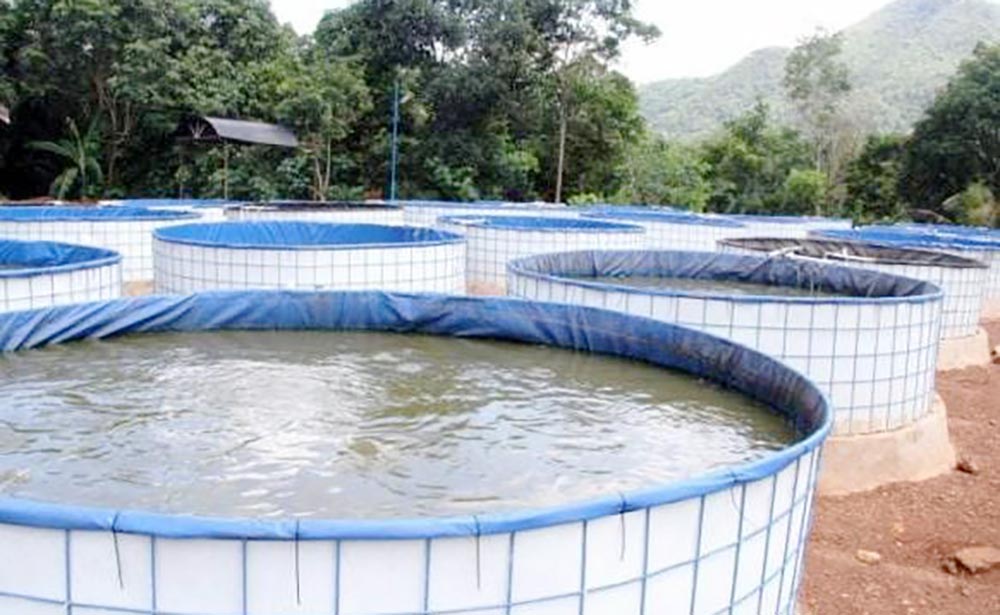Jurus Ampuh dan Sukses Budidaya Lele Sistem Bioflok

Kolam lele.--ISTIMEWA
radarmukomukobacakoran.com - Budidaya lele dengan menggunakan sistem Bioflok merupakan sebuah sistem pemeliharaan ikan lele dengan metode menumbuhkan mikroorganisme yang berfungsi sebagai pengolah limbah budidaya lele itu sendiri. Banyak petani yang budidaya lele dengan media bioflok ini yang berhasil dengan mendapatkan hasl panen lebih maksimal.
Supaya sukses ternak ikan lele harus mengikuti syarat-syarat khusus agar tingkat keberhasilan dalam budidaya ikan lele bisa maksimal. Secara umum ada 4 jenis kolam yang biasa digunakan oleh sebagian besar pembudidaya lele sistem Bioflok. Yaitu kolam dari beton, kolam dari tanah, kolam kotak dari terpal, dan kolam bulat dari terpal. Keempat kolam ini banyak dipakai adalah bahan dari terpal karena lebih efisiendan hemat biaya.
Berikut ini langkah-langkah yang bisa dilakukan agar budidaya lele sistem Bioflok berhasil dan bisa mendapatkan hasil panen maksimal. Pertama yaitu, benih harus berasal dari indukan berkualitas unggul, Benih memiliki pergerakan aktif, Benih dalam keadaan sehat dengan organ yang lengkap, Benih memiliki bentuk yang proporsional dengan ukuran 4-7 cm, Bentuk, ukuran, dan warna benih harus seragam, Jika benih sudah ditebar di dalam kolam, maka taburkan probiotik kembali di hari selanjutnya sebanyak 5 ml/m3.
Selanjutnya, Pemberian Probiotik Tambahan
Saat proses pembesaran benih lele, sanhat perlu memberikan probiotik tambahan sebelum ukuran lele mencapai 12 cm. Berikan probiotik tambahan dengan dosis 5 ml/m3, ragi tempe dengan takaran 1 sendok makan per m3, ragi tape 2 butir/m3, dan dolomit di malam hari dengan dosis 200-300 gram/m3 setiap 10 hari sekali.
Apabila lele sudah mencapai ukuran 12 cm dan lebih, maka pemberian ragi tempe mulai ditambah. Berikan probiotik dengan dosis 5 ml/m3, ragi tempe 3 sendok makan/m3, ragi tape sebanyak 6-8 butir/m3, dan dolomit sebanyak 200-300 gram/m3 di malam hari. Sebelum dimasukkan ke dalam kolam, ragi tempe dan tape perlu dilarutkan terlebih dulu di dalam air.
Langkah selanjutnya, Pemberian Pakan
Meskipun Bioflok hasil olahan limbah lele bisa dijadikan pakan alami, namun tetap perlu mempersiapkan pakan lainnya, namun dengan jumlah dosis yang lebih sedikit dari biasanya. Pastikan pakan lele mengandung nutrisi yang baik untuk pertumbuhan ikan lele, dengan ukuran pakan yang tidak terlalu besar tetapi tidak terlalu kecil, sesuai dengan ukuran mulut lele.
Idealnya, berikan pakan lele di pagi dan sore hari dengan dosis sebesar 80%. Akan tetapi, karena adanya pakan alami untuk lele di sistem bioflok ini, dosis pakan bisa dikurangi hingga 30%. Pakan yang akan diberikan kepada lele sebaiknya difermentasi terlebih dulu dengan probiotik. Langkah-langkah budidsya ikan lele bioflok di atas boleh dicoba.*
English
Powerful and Successful Moves for Catfish Cultivation Biofloc System
radarmukomukobacakoran.com - Catfish farming using the Biofloc system is a catfish rearing system with a method of growing microorganisms that function as a processor of catfish cultivation waste itself. Many farmers who cultivate catfish with this biofloc media have succeeded by getting maximum harvest.
In order to be successful, catfish livestock must follow special conditions so that the success rate in catfish farming can be maximized. In general, there are 4 types of ponds commonly used by most catfish cultivators of the Biofloc system. Namely pools from concrete, pools from the ground, box pools from tarpaulins, and round pools from tarpaulins. These four pools are widely used as tarpaulin materials because they are more efficient and cost-effective.
The following are steps that can be taken so that the cultivation of catfish in the Biofloc system is successful and can get maximum yields. First, the seeds must come from superior quality parents, the seeds have active movement, the seeds are in a healthy state with complete organs, the seeds have a proportional shape with a size of 4-7 cm, the shape, size, and color of the seeds must be uniform, If the seeds have been stocked in the pond, then sprinkle probiotics again the next day as much as 5 ml / m3.
Next, the administration of additional probiotics
During the catfish seed enlargement process, Sanhat needs to provide additional probiotics before the catfish size reaches 12 cm. Give additional probiotics at a dose of 5 ml / m3, tempeh yeast at a dose of 1 tablespoon per m3, tape yeast 2 grains / m3, and dolomite at night at a dose of 200-300 grams / m3 every 10 days.
If the catfish has reached a size of 12 cm and more, then the provision of tempeh yeast begins to be added. Give probiotics at a dose of 5 ml/m3, tempeh yeast 3 tablespoons/m3, tape yeast as much as 6-8 grains/m3, and dolomite as much as 200-300 grams/m3 at night. Before being put into the pool, tempeh yeast and tape need to be dissolved first in water.
Next step, Feeding
Although Biofloc processed by catfish waste can be used as natural feed, it is still necessary to prepare other feed, but with a smaller number of doses than usual. Make sure catfish feed contains good nutrients for catfish growth, with a feed size that is not too big but not too small, according to the size of the catfish's mouth.
Ideally, give catfish feed in the morning and evening at a dosage of 80%. However, due to the presence of natural feed for catfish in this biofloc system, the dose of feed can be reduced by up to 30%. Feed to be given to catfish should first be fermented with probiotics. The steps of biofloc catfish budidsya above can be tried.*















